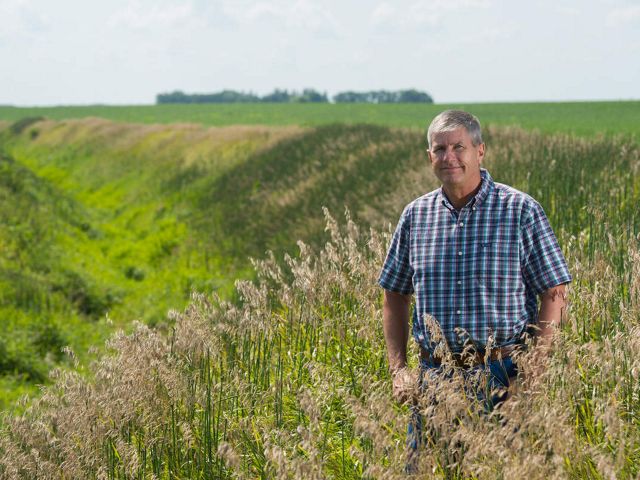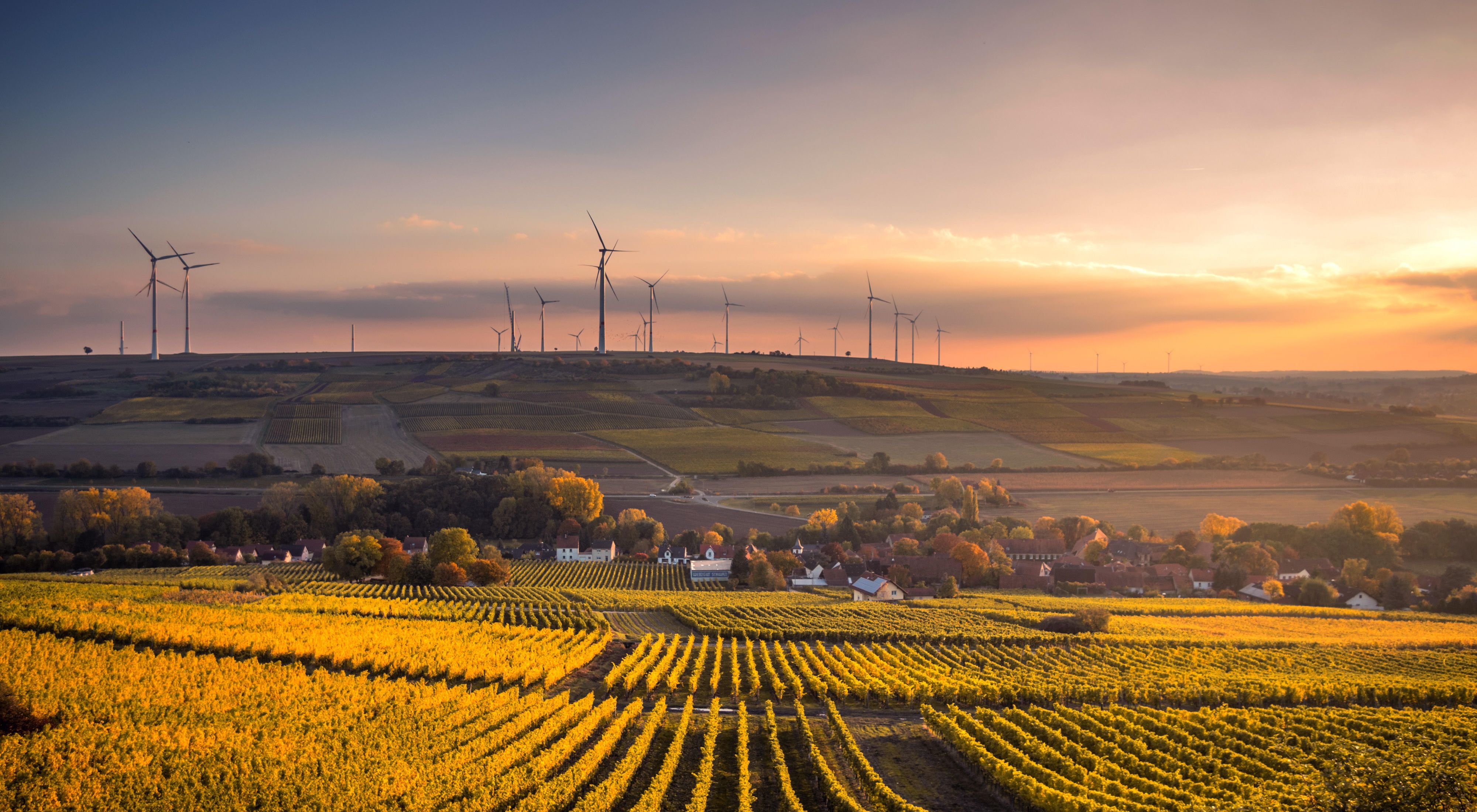If you’re looking for the platonic ideal of an American farmer, you’d be hard pressed to find a better candidate than Tim Smith. A tall, sun-weathered man with salt-and-pepper hair and wire-rimmed glasses, Smith raises corn and soybeans on the same land where he’s lived and worked his whole life—a family farm in Iowa that his great-great grandfather purchased in 1881.
Like all farmers, Tim Smith spends a lot of time thinking about soil, and how to keep it healthy and productive. In recent years he has been experimenting with the use of cover crops and strip-tillage, a practice that involves minimal soil turnover. The idea is to store organic matter in the ground—more organic matter means potentially greater crop yields. It also means more carbon stays sequestered in that soil—it’s a food production strategy, but it also happens to be a climate mitigation strategy.
This is what climate action looks like in 2018—a lot of it happens from the ground up.
Quote
Pledges happen in conference rooms, but the actions that get us to those pledges happen on the ground.
It’s been almost three years since the landmark Paris Agreement established an international climate goal and launched the process for all countries to begin setting their nationally determined contributions (NDCs). But if we’ve learned anything in the intervening time, it’s that national commitments aren’t enough by themselves.
Pledges happen in conference rooms, but the actions that get us to those pledges happen on the ground—through thousands of decisions that yield sometimes small yet tangible impacts that, collectively, can make a big difference. It’s the states and regions that are ramping up their transition to clean energy; the cities that are expanding their public transit systems; the companies finding new ways to make their operations more sustainable and profitable. It’s the local communities making investments to ensure their collective well-being—both in terms of health and safety, and in terms of finance and prosperity, in the long-term and the short-term.

Consider Tim Smith and the thousands of farmers like him. Many are primarily motivated by financial reasons—by thousands of dollars they can save on fertilizer and tillage costs, by the growing consumer interest in sustainably raised food, and by the potential increase in the long-term productivity of their lands. But these practices also have long-term benefits with respect to climate change and soil health, and these farmers recognize that while they are using the land right now to feed their families and support a business, it matters how they leave their land, and the planet, for future generations.
Collectively, those farms represent millions of acres, which represent potentially millions tons of sequestered carbon, and billions of dollars of economic benefits. There’s a reason some of the largest food companies in the world, including General Mills, Kellogg, and Nestlé Purina PetCare Company, are collaborating with The Nature Conservancy to promote soil health practices across the United States—broad uptake of these practices could yield as much as $50 billion in social benefits, including higher incomes for farmers and reduced greenhouse gas emissions.
The economic opportunities around climate mitigation extend beyond the U.S., of course, and beyond the agricultural sector. Farming practices are just one aspect of the broader category of “natural climate solutions”—the conservation, restoration, and improved management of land in order to increase carbon storage or avoid greenhouse-gas emissions. Research by TNC and a group of partners shows that, collectively, these solutions could deliver more than a third of the emission reductions we need to hit the Paris Agreement targets—as much as ceasing the burning of oil annually.
Natural climate solutions also represent a big business opportunity. Recent reports put the global market for ecological restoration between as high as $25 billion annually, with the potential to grow far larger with the right policy and market conditions. Current government commitments for reforestation add up to 160 million acres—an area larger than South Africa. The actual work of reforesting that land will require significant investment and create thousands of jobs—and as more countries potentially raise their commitments, such opportunities will grow. This restoration economy is just starting to grow.

Of course, we’ve long known there are large investment opportunities in the global transition to low-carbon energy across all nations. And it is energy commitments (not landscape investments) that dominate most countries’ NDCs. In many developing countries, for example, there are big opportunities to build out clean energy infrastructure to meet growing needs and ensure the energy infrastructure is sited in ways that minimize environmental impact and maximize community investment where it’s needed.
But some of the most exciting commitments on clean energy are coming from subnational actors. As of now, 140 companies have signed the RE100 pledge to use 100 percent clean energy, including global industry leaders like Apple, AB InBev and Starbucks. And in the public sector, local jurisdictions are often advancing more ambitious clean energy goals than those of their national governments.
In the United States, for example, where climate change is often portrayed as a partisan issue at the national level, state and local leaders of all political persuasions are leading the charge on clean energy. In West Virginia and Nevada, new wind and solar energy developments are being developed on former mining lands—a transition that not only means lower carbon emissions, but also creates new jobs in regions where they are needed, while ensuring that more natural lands are left intact.

Or consider the city of Fayetteville, Arkansas—one of the many US cities that have committed to 100% renewable energy. Fayetteville has not only established progressive targets to reach its overall energy goal, but also announced plans to reduce energy usage, improve transit options and “develop and expand Fayetteville’s reputation as a hub for socially and economically responsible business development, entrepreneurship, and green jobs”—climate action and economic development are explicitly connected in the city’s Energy Action Plan.
In fact, cities are already showing some of the most prominent climate leadership, such as Paris Mayor Anne Hidalgo, who chairs the C40 Cities climate organization. With 90 percent of large cities located near coasts, billions of people and billions of dollars of built capital are directly at risk from sea-level rise and other climate-related risks. Cities can’t afford not to invest in climate adaptation. Little wonder some of the most innovative and financially creative solutions are emerging in places like Cancun and Puerto Morales, Mexico and Shenzhen, China.

When California Governor Jerry Brown first announced the upcoming Global Climate Action Summit, he sent a clear message to the world—even if the U.S. President made a national decision to withdraw from the Paris Agreement, climate action would continue across the country. It was an important message for the world to hear, but just as important is the summit’s focus on subnational actors and the economic opportunities to be realized in on-the-ground climate action.
None of which is to say national commitments aren’t important—we need goals to aim for, and a system to hold everyone accountable. Collectively, there’s still much we can do at the national level to raise global ambition to tackle climate change. But let’s make sure we’re also focusing on the Tim Smiths of the world—those people who are sowing the seeds that will yield real progress on climate action.
Global Insights
Check out our latest thinking and real-world solutions to some of the most complex challenges facing people and the planet today.


